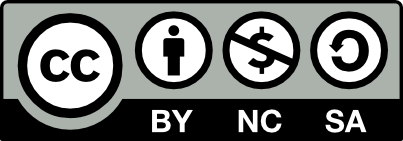Written By Salma Shamsy,
Intern- Lex lumen Research Journal,
February 2025
CAN JUSTICE HEAL?
Punishment has always been associated or linked with the idea of justice. But does justice really heal people as well? Can it heal broken relationships and rebuild and restore communities and provide both victims and offenders with much needed closure? As Mahatma Gandhi, the father of our nation, said, “Condemn the crime, not the criminal.” Restorative justice aims to do just that by putting more focus on healing and reconciliation rather than punishment. In India, where court cases can drag on for years, restorative justice offers a revolutionary approach.
UNDERSTANDING RESTORATIVE JUSTICE
Restorative justice is an alternate approach to justice. It puts more emphasis on repairing the damage and making amends for the harm caused by the conflict or crime rather than punishing the criminal. This approach unites the communities and brings together victims and offenders to promote accountability and restoration. Unlike the traditional criminal justice system that puts more emphasis on taking punitive measures, restorative justice aims to achieve balance through understanding and reparative action.
Some of the principles of restorative justice are voluntary participation of all the parties, direct communication between the victim and the offender, and the offender’s taking responsibility for their actions and committing to making amends. It focuses more on emotional, social, and financial restitution.
RESTORATIVE JUSTICE IN INDIA
India’s legal system put more emphasis on punitive measures to deliver justice, which is heavily influenced by the British colonial period. However, even restorative justice is not a new concept in India. It has rather been there even before the colonial period. The traditional dispute resolution mechanism was based on reconciliation among the members of the community.
Cases that involve juveniles, family disputes, and minor offenses, the Indian judiciary system has gradually recognized the value of restorative justice. Section 320 of the Criminal Procedure Code (CrPC) allows for the compounding of certain offenses through mutual agreement. Similarly, the Juvenile Justice (Care and Protection of Children) Act, 2015, also emphasizes on reintegration and rehabilitation rather than harsh punishments.
Lok Adalats have been set up in India. It resolves conflicts through mutual agreement and mediation, reducing case backlogs in court. Lok Adalat offers a low-cost, informal conflict resolution process, especially in civil and small criminal situations.
STRENGTHENING RESTORATIVE JUSTICE IN INDIA
- Policy and legal Reforms: Restorative justice should be available as an alternative way to achieve justice. It should be integrated into the Legal framework of India not as a replacement but an alternative way. Changes in provisions within the CrPC by expanding mediation and reconciliation can encourage wider adoption.
- Community Engagement: Community participation in restorative justice mechanisms should be encouraged. It can further strengthen its acceptance and ensure that solutions are accepted by society and are culturally relevant.
- Awareness and Training: Another factor that can help in the implementation of reformative justice is by educating people from different walks of life, like legal professionals, law enforcement officers, and community leaders. Public awareness campaigns educating people about the benefits of reformative justice.
- Institutionalization of Restorative Practices: Programs of restorative justice and educating people of the same should be formally embedded in institutions. To promote a culture of dialogue and non-violence from an early age, schools can introduce conflict resolution training.
- Victim Support and Protection: One of the crucial points of restorative justice is that the victim should feel safe and empowered. To facilitate genuine reconciliation between the victim and offenders, both should be provided with psychological support, legal aid, and counseling services.
CHALLENGES IN IMPLEMENTING RESTORATIVE JUSTICE
Emphasis on punitive measures: It can be challenging to implement restorative justice in India since the formal judicial system of India puts a high emphasis on punitive measures to justice rather than reformative, making it difficult to integrate restorative practices on a large scale.
Lack of awareness: Many victims and even offenders are often afraid that alternative dispute resolution procedures won’t provide fair or sufficient relief for both parties. While the other percent of people are unaware that such ways to justice exist.
Social and Cultural Hurdles: Many groups are reluctant to engage in face-to-face mediation, especially when it comes to situations involving gender-based violence or strongly rooted social structures.
CONCLUSION
India can move forward with a justice system that fosters peace, rehabilitation, and long-term social harmony. Restorative justice aims to offer a more compassionate way to address conflicts by putting more emphasis on healing and closure than punitive measures. As Mahatma Gandhi famously said, “The best way to find yourself is to lose yourself in the service of others.” Perhaps the best way to find justice is to seek restoration rather than mere retribution.


